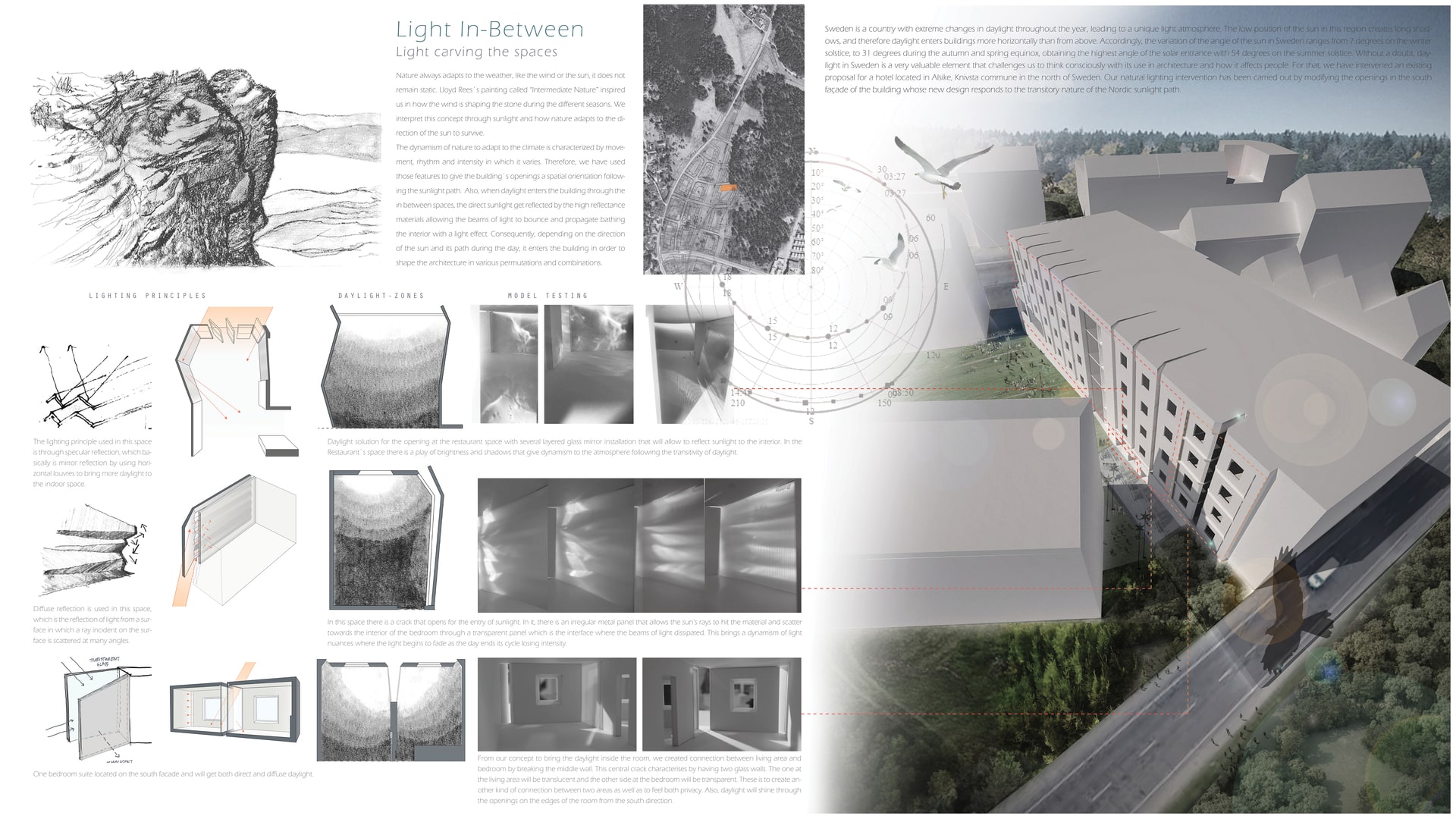Project Description
Sweden is a country with extreme changes in daylight throughout the year, leading to a unique light atmosphere. The low position of the sun in this region creates long shadows, and therefore daylight enters buildings more horizontally than from above. Accordingly, the variation of the angle of the sun in Sweden ranges from 7 degrees on the winter solstice, to 31 degrees during the autumn and spring equinox, obtaining the highest angle of the solar entrance with 54 degrees on the summer solstice. Without a doubt, daylight in Sweden is a very valuable element that challenges us to think consciously with its use in architecture and how it affects people. For that, we have intervened an existing proposal for a hotel located in Alsike, Knivsta commune in the north of Sweden. Our natural lighting intervention has been carried out by modifying the openings in the south façade of the building whose new design responds to the transitory nature of the Nordic sunlight path. The purpose of the façade`s openings is to allow the beams of daylight to come inside and disperse by reflection into the space so they will embrace people`s presence. Our intention is not to illuminate everything but play with different patterns of light and also shadow to give the space nuances and dynamism while the daylight passes by. Due to the lesser amount of sunlight present in this northern area of the world, we have used materials with reflector characteristics (metallic panel and glass mirror) in the openings since it allows light rays to bounce; therefore, their propagation is greater and bathes the interior with a dim light effect. Additionally, the interior is white, allowing incoming light to diffuse, creating a comfortable atmosphere to maximize interior brightness during dark winter periods. Finally, the facade is characterized by having windows that allow access to the view. But the openings that break the façade allow the sunlight to carve into the building and create the light effects that will add distinctions of brightness and shadows to the space. The project suggests not only a simple light effect solution to create a pleasant atmosphere, but also takes into account the importance of daylight inside the building for people`s health. The intervention of the façade delves into the complexity of directionality and the intensity of daylight during the year in this northern part of Europe. The objective is to create awareness of the relationship between daylight and architecture, consequently its potential as a generator of space.
